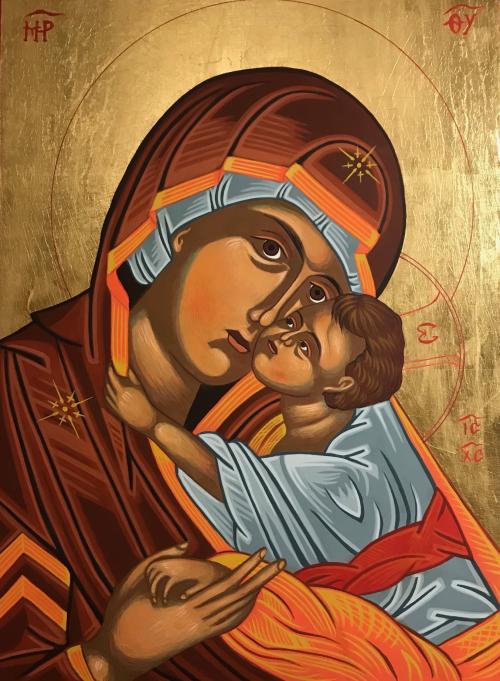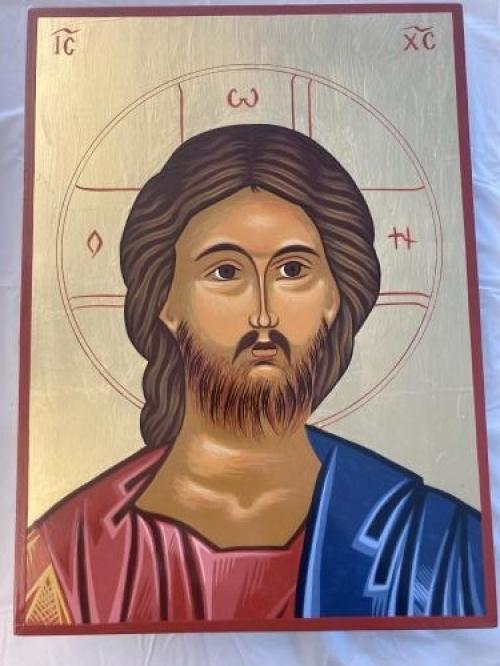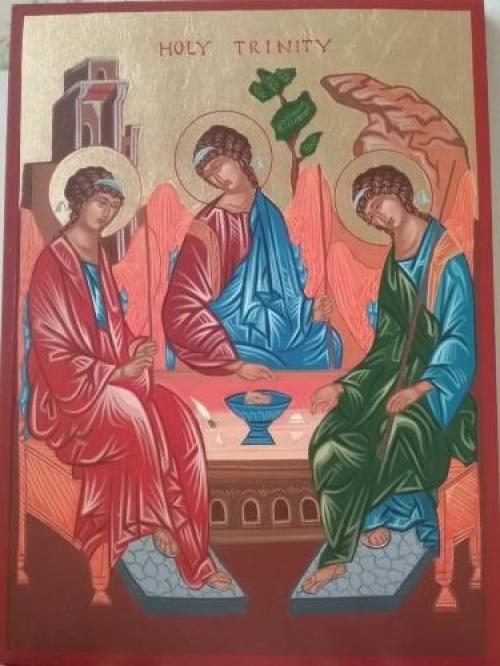
by Sr. Hanna Paradowska
“There is a Jewish saying that thousands of angels go before every human being, crying: ‘Make way, make way for the image of God.’”
Sacred Doorways: A Beginner’s Guide to Icons, by Linette Martin
My adventure with iconography began several years ago when I attended a series of icon retreats and workshops with various iconographers. One of those retreats was led by Drazen Dupor, a Serbian iconographer, who had studied the art of iconography in Greece. Drazen encouraged me to continue to learn iconography and he offered to teach me. Over a few years, he has supported me in learning this unique art. I have written several icons St. Mary Magdalene and St. Catherine of Siena, and several copies of my favorite image - Mother of Tenderness, the Holy Family Icon, and Christ the Pantocrator. However, I still consider myself a beginner. Iconography became a hobby of mine and a space for nurturing my soul. It can be so easy in our busy lifestyle to lose perspective when we get overwhelmed with multiple tasks and responsibilities and when everything seems urgent. The act of creating an icon not only provides me with the time for prayer and theological reflection but also gives me the opportunity to take a break from the daily hustle and bustle, to slow down and be present to myself.
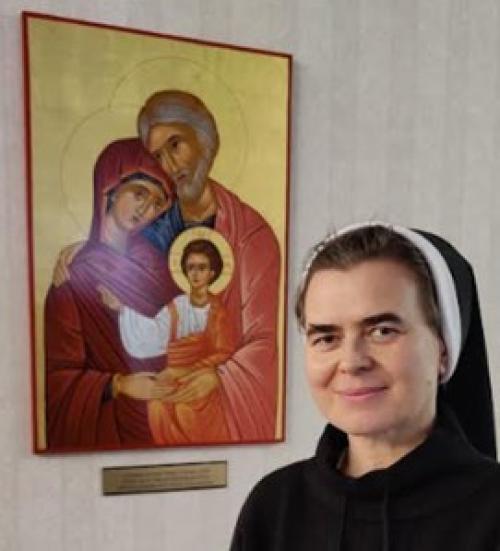
I am also drawn to this unique art because of the process of creating an icon and its analogy to our spiritual life. There are numerous steps one needs to take to create an icon. I see this process as an inspiring analogy to our life's journey. The first step would be to select an image of a saint or a person of the Holy Trinity one is called to write. Then one needs to do the groundwork of preparing the board: whether it will be a piece of wood found at the beach of Lake Michigan, a board from Home Depot, or a canvas from an art shop. Multiple layers of gesso are needed to cover the board. After it dries, by using sandpaper from the lower to the highest grid number the board has to be polished until it becomes as smooth as the surface of a glass. Only then the board is ready for transferring the holy image to the surface of the board, initially with a pencil and then paint.
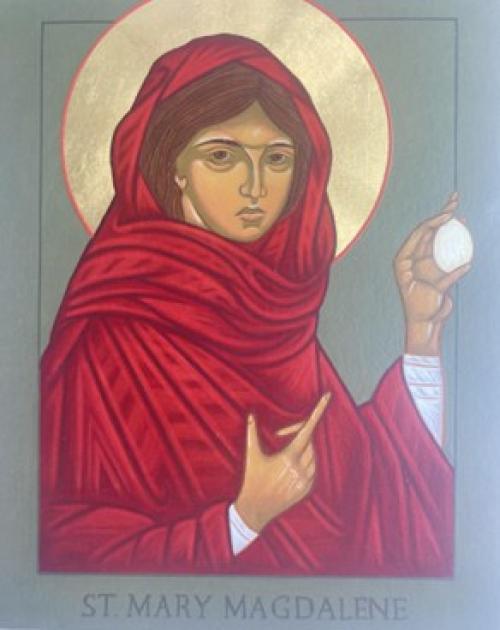
Once the image is transferred, we begin to apply several layers of the base colors, each time making sure the board is completely dry before applying another layer. Next, we apply different levels of highlights by gradually adding more and more light with lighter shades of the base colors. By doing it we create the perception that light is coming from the saint. The theological meaning of it is that God’s love has purified and transformed the saints, to the point that the light emanates from them. The gold leaf comes at various stages, depending on the school of iconography. Typically, gold in iconography has been used for the halo, and the gold background should be used only for images that depict the persons of the Holy Trinity. The final step is placing a layer of varnish, followed by the dedication, and blessing of the piece of art. During the entire process, just as in one's life journey, flaws and mistakes may occur. Their function is to remind us that we are neither perfect people nor artists. We are a "work in progress". Mistakes on the icons may symbolize our character’s flaws, our poor choices, or our emotional scars from the wounds we have endured. Especially those that we may not be able to correct or erase during our lifetime. The hope in this analogy is that the day will come when God, the Master Artist, will put the final coat on his Holy Icons, which we are.
His love will transform all of those scratches and scars that we have endured as well as those that we have inflicted upon others during our earthly lives. Our God, the Master, will purify and heal us from all of those imperfections and then we, the icons made in the Image of God, will shine with the most beautiful, pure, and bright light.
